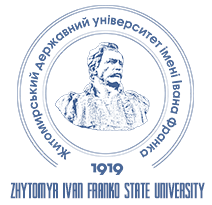TRANSMISSSION OF CULTURE AS A GOAL OF MODERN LANGUAGE EDUCATION
DOI:
https://doi.org/10.35433/pedagogy.4(111).2022.76-85Keywords:
culture, intercultural communication, language education, intercultural dialogue, intercultural competenceAbstract
The article deals with one of the modern global trends – the transition from a monocultural to a multicultural perspective in social interaction. It focuses on the reflection of this trend in language education (both in native and foreign language). The problem is to reintegrate the cultural dimension into learning languages. The author of the article argues that the purpose of intercultural language education lies in the construction of an intercultural awareness as the ability of language users to act as representatives of certain cultures, be ready to accept the "otherness" of each other, respect the right to cultural difference, exhibit tolerant attitude to other’s values and behaviour patterns, counteract stereotypes and bias, and to rethink their own cultural luggage. The study of a language is considered as an intercultural language education. The result of the intercultural approach in language education is viewed as the multicomponent intercultural competence – the unity of knowledge of one’s own and other cultures; skills of discovery, interaction, and interpreting; curious and open attitude to one’s own and another culture and country; critical cultural awareness. Dialogue of cultures is positioned as one of the key principles of intercultural foreign language education. It means readiness to listen to and understand multiple perspectives, products, practices, and cultural norms in one’s own and other countries, even those with which you disagree, to have critical attitude towards stereotypes and prejudice, to be open for exchange of ideas based on mutual understanding and respect for cultural diversity. The modern language textbooks should be multicultural in their content, and contain information about not only the target language culture, but also offer materials on other cultures for visual and mental perception, discussion and comparison.
References
Batsevych, F.S. (2007). Slovnyk terminiv mizhkulʹturnoyi komunikatsiyi [Dictionary of terms of intercultural communication]. Kyiv: Dovira [in Ukrainian].
Beacco, J.-C. (2011). The cultural and intercultural dimensions of language teaching: current practice and prospects. Text presented at the Seminar on "Curriculum convergences for plurilingual and intercultural education", Strasbourg, 29-30 November 2011. Retrieved from: https://studylib.net/doc/7564325/the-cultural-and-intercultural-dimensions-of-language-tea. [in English].
Bihych, O.B., Borysko, N.F., Boretsʹka, H.E. & in./ za zah. red. S.Yu. Nikolayevoyi. (2013). Metodyka navchannya inozemnykh mov i kulʹtur: teoriya i praktyka: pidruchnyk dlya stud. klasychnykh, pedahohichnykh i linhvistychnykh universytetiv [Methods of teaching foreign languages and cultures: theory and practice: a textbook for students. classical, pedagogical and linguistic universities]. Kyiv: Lenvit [in Ukrainian].
Byram, M. (1997). Teaching and Assessing Intercultural Communicative Competence. Clevedon: Multilingual Matters [in English].
Council of Europe. (2008). White Paper on Intercultural Dialogue. Living together as Equals in dignity. 118th Session of the Committees of Ministers. Strasbourg, 7 May 2008 [in English].
Council of Europe. (2014). The concept of intercultural dialogue. Retrieved from: http://www.coe.int/t/dg4/ intercultural/concept_EN.asp#P30_3374 [in English].
Intercultural competences. Conceptual and operational framework. (2013). Paris: UNESCO, 2013. Retrieved from: https://unesdoc.unesco.org/ark:/48223/pf0000219768 [in English].
Leeds-Hurwitz, W. (2014). Intercultural Dialogue. Key concepts in intercultural dialogue. Center for Intercultural Dialogue [in English].
Manakin, V.M. (2012). Mova i mizhkulʹturna komunikatsiya: navch. posib. [Language and intercultural communication: teaching. manual]. Kyiv: Center "Akademiya". Seriya "Alʹma mater" [in Ukrainian].
Nikolayeva, S.Yu. (2010). Zmist navchannya inozemnykh mov i kulʹtur u serednikh navchalʹnykh zakladakh. [The content of teaching foreign languages and cultures in secondary educational institutions]. Inozemni movy – Foreign languages, № 3, 3-10 [in Ukrainian].
Passov, E.Y. (2002). Kulʹturosoobraznaya modelʹ professyonalʹnoy podhotovky uchytelya: fylosofyya, soderzhanye, realyzatsyya [A culture-appropriate model of professional teacher training: philosophy, content, implementation]. Inozemni movy – Foreign languages, № 4, 3-18 [in russian].
Ratzmann, Nora. (2019). Intercultural dialogue. A review of conceptual and empirical issues relating to social transformation. MOST Discussion Papers/01. UNESCO [in English].
Rogers Everett, M.A. (1994). History of Communication Study: A Biographical Approach. New York: Free Press [in English].
The Dialogue among civilizations and cultures: UNESCO's strategic approaches and programmatic focus. (2008). UNESCO. Retrieved from: https://unesdoc.unesco.org/ark:/48223/pf0000159171 [in English].
UNESCO. (2000). Dialogue among Civilisations. Backgroun. Retrieved from: http://www.unesco.org/dialogue/en/background.htm [in English].
UNESCO. (2002). UNESCO Universal Declaration on Cultural Diversity: a vision, a conceptual platform, a pool of ideas for implementation, a new paradigm. Retrieved from: https://unesdoc.unesco.org/ark:/48223/pf0000127162 [in English].
UNESCO. (2009). Investing in cultural diversity and intercultural dialogue. Paris: UNESCO [in English].
Vereshchahyn, E.M., & Kostomarov, V.H. (1990). Yazyk i kulʹtura: linhvostranovedenie v prepodavanii russkoho yazyka kak inostrannoho. 4-yzd., pererab. dop. [Language and culture: Linguistic studies in the teaching of the russian language as a foreign language. 4th edition, revised. add]. Moscow: rus. yaz. (Byblyoteka prepodavatelya russkoho yazyka kak ynostrannoho) [in russian].
Downloads
Published
Issue
Section
License

This work is licensed under a Creative Commons Attribution-NonCommercial-NoDerivatives 4.0 International License.
Authors published in this journal agree to the following terms:
a) The authors reserve the right to author their work and grant the journal the right to first publish this work under the Creative Commons Attribution License, which allows others to freely distribute the published work with a mandatory link to the authors of the original work and the first publication of the work therein magazine.
b) Authors have the right to enter into separate additional agreements regarding the non-exclusive distribution of the work in the form in which it was published by this journal (for example, posting work in an electronic repository of the institution or publishing as part of a monograph), provided that the reference to the first publication of the work is maintained therein. magazine.
c) Journal policy permits and encourages the submission of manuscripts by the authors on the Internet (for example, in repositories of institutions or on personal websites), both prior to submitting this manuscript to the editorial board and as it contributes to the emergence of productive scientific discussion, and has a positive impact on the promptness and dynamics of citing a published work (see The Effect of Open Access).

 ISSN
ISSN 





